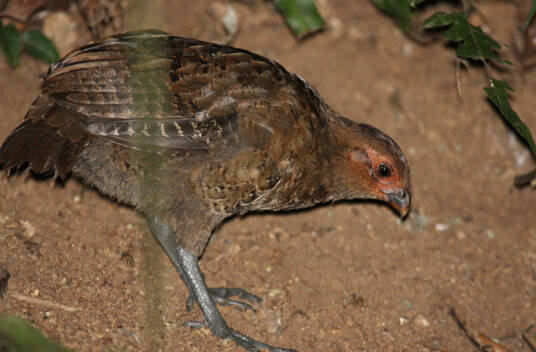
Odontophorus gujanensis, Marbled Wood-quail, is usually active at dawn or dusk, living in family units, usually in small groups of up to 12. They are used to looking for food on the ground and searching the soil for fallen seeds, fallen fruits and insects. Gentle, shy and cautious, she usually runs...
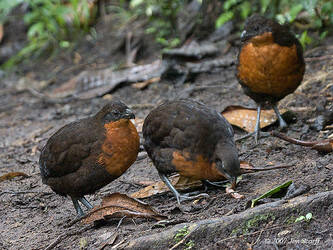
Odontophorus erythrops, Rufous-fronted Wood-quail, is usually active at dawn or dusk, living in family units, usually in small groups of up to 12 individuals. A gentle personality. They are used to looking for food on the ground and searching the soil for fallen seeds, fallen fruits and insects. Shy...
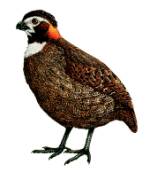
Odontophorus dialeucos and Tacarcuna wood quail are active at dawn or dusk. They live in family groups, usually in small groups of up to 12. A gentle personality. They are used to looking for food on the ground and searching the soil for fallen seeds, fallen fruits and insects. Shy and cautious, she...
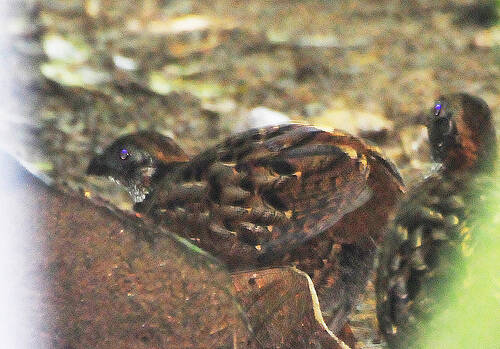
Odontophorus columbianus, Venezuelan quins, are active at dawn or dusk and live in families in small groups of up to 12 quins. A gentle personality. They are used to looking for food on the ground and searching the soil for fallen seeds, fallen fruits and insects. Shy and cautious, she usually runs...
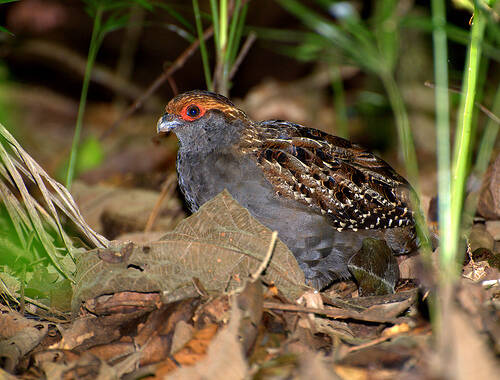
Known as Odontophorus capueira or Spot-winged Wood-quail, they are active at dawn or dusk. They live in families in small groups of up to 12 birds. A gentle personality. They are used to looking for food on the ground and searching the soil for fallen seeds, fallen fruits and insects. The character...
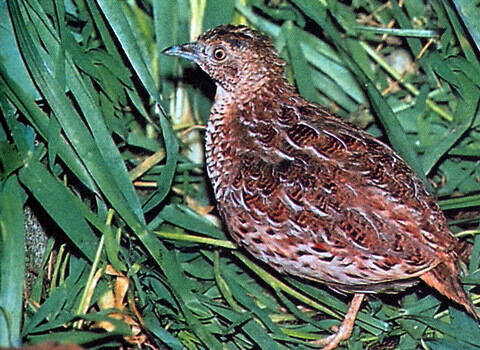
Odontophorus balliviani, or Stripe-faced Wood-quail, is active at dawn or dusk and lives in family groups of up to 12 individuals. A gentle personality. They are used to looking for food on the ground and searching the soil for fallen seeds, fallen fruits and insects. Usually shy and cautious, when...
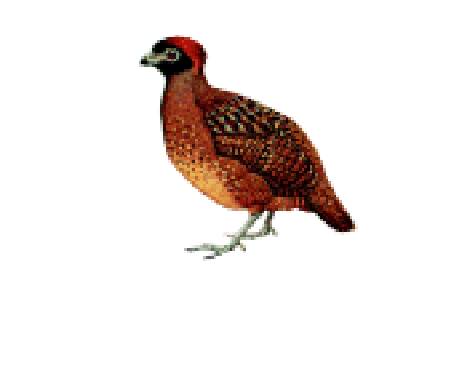
Odontophorus atrifrons is a timid species and therefore one of the most difficult birds to study or even observe. Usually active at dawn or dusk, they live in family units and generally gather in small groups of up to 12 individuals. A gentle personality. They are used to looking for food on the gro...
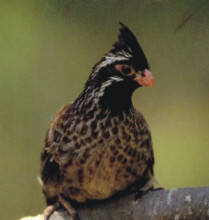
Dendrortyx macroura, Long-tailed wood-partridge, Long-tailed Wood Partridge, the specific habit is unknown. The breeding season occurs from February to April. Each clutch lays 4-8 eggs, with an average of 6 eggs, and the incubation period is usually 28-32 days.Listed on the International Union for C...
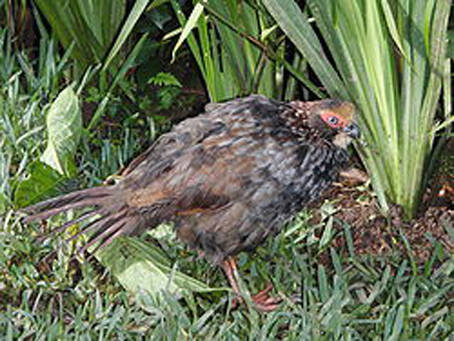
Its scientific name is Dendrortyx leucophrys, but its specific habits are unknown. The breeding season is from February to April. Each clutch lays 4-8 eggs, with an average of 6 eggs, and the incubation period is usually 28-32 days.Listed on the International Union for Conservation of Nature (IUCN)...

The Bearded quail (Dendrortyx barbatus) is bearded Wood-partridge and has no bearded subspecies.The whisker quail's call consists of a loud series of whistles with three or four long, high syllables: O EE EE, with the last note strong. Female birds can be distinguished from male birds by their l...

Singing Quail (Dactylortyx thoracicus) has 17 subspecies.Quails live in small families, searching for food on the ground. He will not immediately hide from danger, but will stand and watch. It feeds on the small bulbs and seeds of plants, as well as various insects, such as the American Champaedia (...
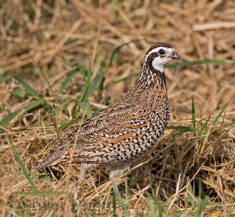
Cyrtonyx sallei: Formerly a subspecies of the Montejo quail, it became a separate species in 2014.The quails feed mainly on sorrel and sedge seeds. These birds are often seen digging in moist soil, their long, slender claws suitable for digging out plant roots and tubers. Insects and pupae are also...
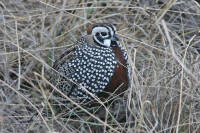
Ocellated Quail (Cyrtonyx ocellatus), no subspecies.Quails are herbivorous birds. The food is mainly Oxalisspp. And sedge (Cyperusspp.) The seeds of... As a result, these birds are often seen digging in moist soil, with elongated claws suited to digging at the roots and tubers of plants. Insects and...
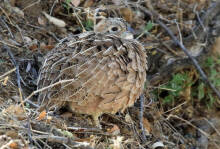
Colored Quail (Cyrtonyx montezumae) has five subspecies.Painted quails feed on green plants and insects on the ground, moving in clusters, usually walking or running on the ground, and feeding in the early morning. The food is mainly oxalis (oxalis SPP.) and Cyperusspp.) seeds. As a result, these bi...
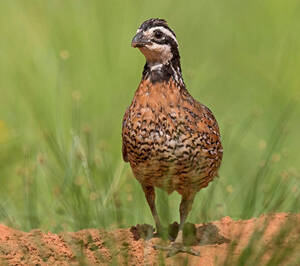
Northern Bobwhite Partridge (Colinus virginianus) is a small partridge with 20 subspecies.Partridge is distributed in North America, is the most widely distributed partridge in the United States, almost throughout the eastern United States, in parts of Mexico can also be seen, although the number is...

Spot-bellied Bobwhite (Colinus leucopogon) has six subspecies.Male quail birds are most common in spring and summer, with a loud song and a bob-bob-white call.Listed on the International Union for Conservation of Nature (IUCN) 2016 Red List of Threatened Species ver 3.1 - Not Threatened (LC).Protect...
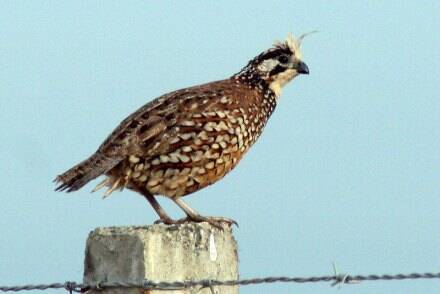
Colinus cristatus, Crested Bobwhite, is an insect eater. In spring and summer, male birds are most often seen, with a loud, clear call that produces a bob-bob-white call.Listed on the International Union for Conservation of Nature (IUCN) 2016 Red List of Threatened Species ver 3.1: Not Threatened (L...
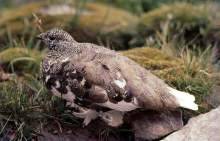
The White-tailed Ptarmigan (Lagopus leucurus) has five subspecies.The winter white-tailed thunderbird lives in tundra, tundra scrub forests and rocky meadow areas near the North Pole and is very hardy. Like to be active in the woods, sometimes also to the farmland. Most of them move in groups except...

Ortalis wagleri, Rufous bellied Chachalaca, eats banana fruits, coffee berries and leaves, and occasionally pecks at insects.International Union for Conservation of Nature (IUCN) Red List Protection Level: No Threat (LC).Protect wild animals and eliminate wild meat.Maintaining ecological balance is...